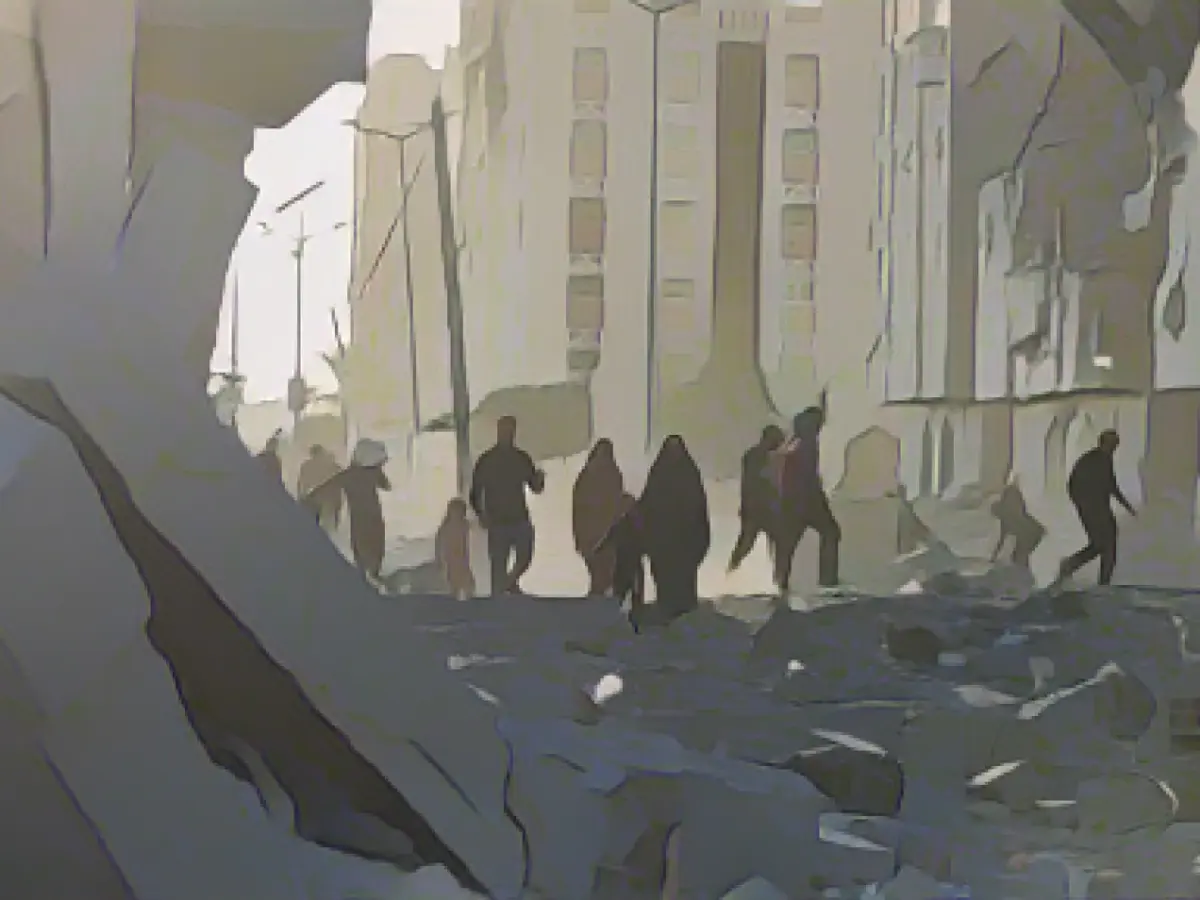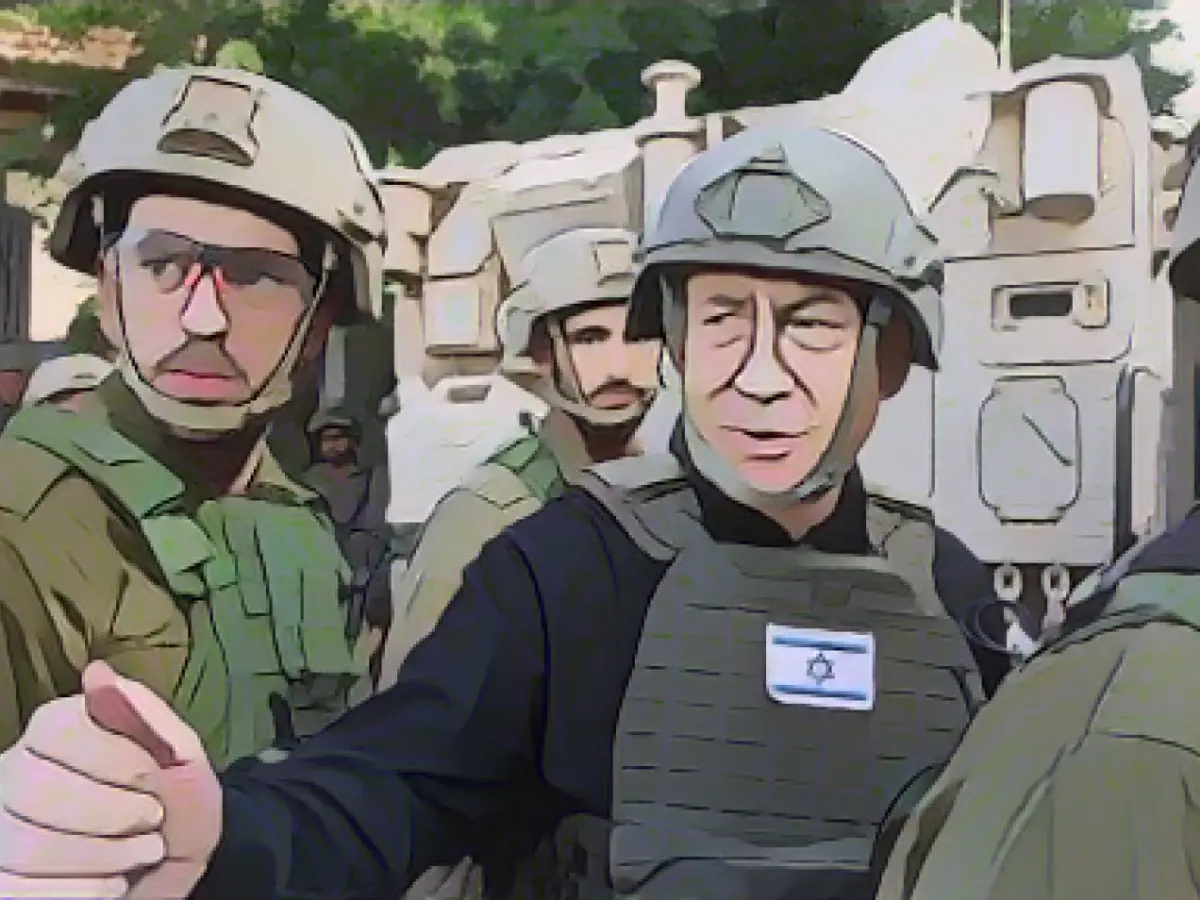Middle East: Israel's Intensified Offensive in Gaza Strip
The Israeli military has escalated its operations in the Gaza Strip over the festive season, honing in on the extensive tunnel network operated by Hamas, the Islamist group that controls the territory.
According to the Israeli military, their troops are engaged in intricate battles in densely populated areas, tracking down terrorist infrastructure, particularly in the underground tunnels. Spokesperson Daniel Hagari stated that the destruction of these tunnels remains a time-consuming process, but the military claimed to have gained control of the northern part of the coastal strip.
Protecting Civilians and Humanitarian Aid
In an attempt to alleviate the suffering of the civilian population in the region, the United Nations Security Council passed a resolution over the weekend. Despite the watered-down text, it encouraged an increase in humanitarian aid. The US, as Israel's top ally, abstained from voting, but President Joe Biden urged Israeli Prime Minister Benjamin Netanyahu to ensure the protection of civilians and aid workers at all costs.
Targeting Hamas Leadership and Tunnel Network
The US government has pressed Israel to adopt a more targeted approach, focusing on Hamas leaders rather than indiscriminate attacks on civilians. Hamas is believed to be using underground tunnels for hiding and launching attacks, prompting Israel to boost its technical forces in cities like Chan Junis. Spokesperson Hagari revealed that the division fighting in the city would soon undergo further expansion.
Complex and Deadly Tunnel Network
The United Nations estimates that one in four Palestinians in Gaza lives near starvation. Reports have suggested that Hamas is hiding extensive networks of tunnels beneath the coastal strip. These tunnels can stretch for miles, many of which extend deep beneath the earth's surface. The Israeli military has reported destroying thousands of explosive devices, as well as a senior Hamas official responsible for weapon supply.
Resistance and Reactions
Meanwhile, mutual attacks persisted on the border between Israel and Lebanon. Israeli troops targeted a Hezbollah military compound and other sites in neighboring Lebanon. The Hezbollah militia, which is closely linked to Israel's arch-nemesis, Iran, launched rocket attacks and shelled toward Israel. Iran has reportedly been involved in planning attacks by Houthi rebels on ships in the Red Sea.
Volatile Situation and Uncertain Future
The Israeli army has captured over 700 members of terrorist organizations during the ground operation in Gaza. The conflict, which was triggered by attacks near the border in October, has resulted in thousands of deaths on each side. The tense situation in the region continues to evolve, with an uncertain future for both Israel and the Palestinians.
As Christmas was celebrated quietly in the Holy Land, access to Bethlehem in the West Bank was heavily restricted due to Israeli army roadblocks. Meanwhile, military operations in Gaza persisted, with Israeli troops intensifying their focus on the burrowed tunnel network operated by Hamas.
Additional Insights
- Ceasefire and Hostage Exchange:
- A fragile ceasefire and tentative prisoner exchange agreement between Israel and Hamas has proven ineffective, with a precarious second stage coefficient upon which its continuation remains uncertain due to political interests and difficulties in locating living hostages [3][4].
- IDF Operations:
- Israeli troops have withdrawn from populated areas, maintaining a presence in the eastern Netzarim Corridor, the Philadelphi Corridor, and the buffer zone along Gaza's northern and eastern borders [3].
- Tunnel Operations:
- Indiscriminate bombing of residential areas by the Israeli military, intended to target Hamas leaders hidden underground, has led to significant civilian casualties [2].
- The military authorized "triple-digit numbers" of Palestinian civilian deaths as collateral damage during tunnel-targeting operations [2].
- Humanitarian Concerns:
- The International Committee of the Red Cross (ICRC) has consistently advocated for safe humanitarian access throughout Gaza, including the north. The ICRC has facilitated medical transfers and aided in the evacuation of injured patients [1].
- Negotiations and Future Stages:
- Indirect negotiations for a permanent truce between Hamas and Israel have begun, though challenges and tensions remain due to political obstacles and potential difficulties in saving living hostages [3][4].
Source:
[1] O'Brien, N. (2021, January 23). The Gaza ceasefire: What it means, and why it may not last.
[2] Smolansky, E., & Ishmael, N. (2021, May 25). Israel's Gaza army raids yield hundreds of Hamas captives.
[3] Rogel, S., & Neubauer, F. (2022, January 18). Israel and Hamas agree to 42-day ceasefire in Gaza.
[4] Landay, J. (2022, January 22). Israeli-Hamas proxy war could escalate if Hamas can't deliver hostages in prisoner exchange, experts say.








